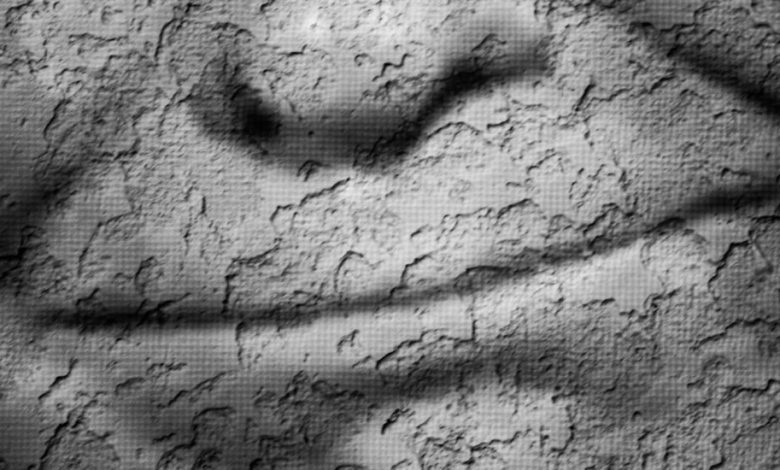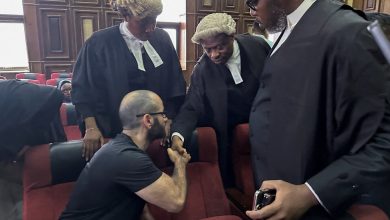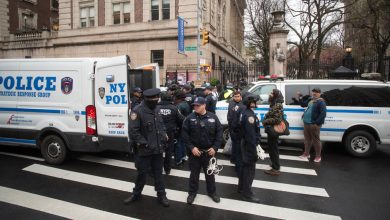I Read the Mueller, Ukraine and Jan. 6 Reports as Though They Were One Long Book

In retrospect, the Mueller report was a cry for help.
“The Office,” as the special counsel so self-effacingly called itself in its report, knew its limits, or at least chose them. It could not indict a sitting president. It was generous with the benefit of the doubt when evaluating a potential “obstructive act” or gauging criminal intent by President Donald Trump. It considered mitigating, and sometimes dubious, explanations for his behavior, and was as restrained in interpreting the president’s misdeeds as it was zealous in listing them.
Its conclusion on whether Trump obstructed justice became a Washington classic of needle-threading ambiguity: “While this report does not conclude that the President committed a crime, it also does not exonerate him.” The Office declined to call Trump a criminal, however much it might have wanted to.
Instead, scattered throughout its 448 pages, the Mueller report includes some not-so-subtle instructions and warnings that future investigators, less inhibited, could heed when facing fresh misdeeds.
The two highest-profile congressional investigations of Trump that followed — the 2019 report by the House Intelligence Committee on Trump’s pressuring of Ukraine as well as the recently released report by the select committee on the Jan. 6 attack — read like deliberate contrasts to the document produced by Robert Mueller and his team. Their presentation is dramatic, not dense; their conclusions are blunt, not oblique; their arguments are political as much as legal. And yet, the Ukraine and Jan. 6 reports seem to follow the cues, explicit or implied, that the Mueller report left behind.
Read together, these three major investigations of the Trump presidency appear in conversation with one another, ever more detailed drafts of a most unorthodox historical record — a history in which these documents are characters as much as chroniclers.
The documents try to explain the former president, and they also strain to contain him. The Mueller report inspects the guardrails that Trump bent and sometimes broke. The Ukraine report lays out the case that led to his first impeachment. The Jan. 6 report now declares him “unfit” to return to the nation’s highest office — the very office Trump is again pursuing — or to any office below it.
The effect is cumulative. While the Mueller report evaluates Trump’s behavior as a series of individual, unrelated actions, it knows better, stating near the end that the president’s “pattern of conduct as a whole” was vital to grasping his intentions. The Ukraine and Jan. 6 reports took up that task, establishing links among Trump’s varied transgressions.
While the Mueller report wonders whether Trump and his advisers committed certain acts “willfully” — that is, “with general knowledge of the illegality of their conduct” — the investigations into his strong-arming of Ukraine and the Capitol assault seek to show that Trump knew that his actions violated the law and that his statements ran counter to the truth.
And while the Mueller report grudgingly posits that some of the president’s questionable actions might have been taken with the public, rather than the private, interest in mind, the Ukraine and Jan. 6 reports contend that with Trump, the distinction between public and private always collapsed in favor of the latter.
The Mueller report would not declare that the president deserved impeachment or had committed crimes, but it didn’t mind if someone else reached those conclusions. It states plainly that accusing Trump of a crime could “pre-empt constitutional processes for addressing presidential misconduct,” that is, the constitutional process of impeachment, which the Ukraine investigation would soon deliver.
The Mueller report also notes in its final pages that “only a successor Administration would be able to prosecute a former President,” which is what the Jan. 6 special committee, with its multiple criminal referrals, has urged the Biden administration’s Justice Department to do.
The Ukraine and Jan. 6 reports did their best to answer Mueller’s call.
ALL THREE REPORTS INCLUDE quintessentially Trumpian scenes, consistent in their depictions of the former president’s methods, and very much in keeping with numerous journalistic accounts of how he sought to manipulate people, rules and institutions.
When the Jan. 6 report shows Trump haranguing Mike Pence, telling the vice president that Pence would be known as a “patriot” if Pence helped overturn the 2020 election, it’s hard not to recall the scene in the Mueller report when the president tells Jeff Sessions that the attorney general would go down as a “hero” if he reversed his recusal from the Russia investigation.
All three reports show Trump deploying the mechanisms of government for political gain. Less than four months into his term, Trump relies on a Department of Justice memo as cover to fire the F.B.I. director; he uses the Office of Management and Budget to delay the disbursal of military aid to Ukraine in 2019; and he attempts to use fake state electoral certificates to upend the results of the 2020 vote.
Perhaps no moment is more believable than the Ukraine report’s description of Trump’s April 2019 conversation with the newly elected Ukrainian president, Volodymyr Zelensky, when Trump makes a point of mentioning that Ukraine is “always very well represented” in the Miss Universe pageants.
Still, each investigation offers a slightly different theory of Trump. In the Mueller report, Trump and his aides come across as the gang that can’t cheat straight — too haphazard to effectively coordinate with a foreign government, too ignorant of campaign finance laws to purposely violate them, often comically naïve about the gravity of their plight. When Michael Flynn resigns from the White House after admitting to lying about his contacts with Russian officials, Trump consoles him with the assurance, “We’ll give you a good recommendation,” as if Flynn were a departing mailroom intern rather than a disgraced ex-national security adviser.
When the Trump campaign tried to conceal details surrounding its infamous Trump Tower meeting with a Russian lawyer in June 2016, the Mueller report suggests that the effort “may reflect an intention to avoid political consequences rather than any prior knowledge of illegality,” that is, that the Trump team might have felt just shame, not guilt.
The Mueller report rebuts the Trumpian notion that the president can employ his legitimate authority regardless of the illegitimacy of his purpose. “An improper motive can render an actor’s conduct criminal even when the conduct would otherwise be lawful and within the actor’s authority,” the report states, in the patient tone of a parent explaining household rules to a child. But even in the damning sections on Trump’s potential obstruction of justice (in which “the Office” all but states that it would have charged Trump if it could have), the report theorizes that the president may have been attacking the inquiries against him out of concern that they hindered his ability to govern, not because he was hiding some nefarious activity.
The Ukraine report, by contrast, regards Trump as more strategic than chaotic, and it does not wallow in the netherworld between the president’s personal benefit and his public service. “The President placed his own personal and political interests above the national interests of the United States, sought to undermine the integrity of the U.S. presidential election process, and endangered U.S. national security,” Representative Adam Schiff declares in the report’s preface.
The three investigations tell different stories, but the misdeeds all run together, more overlapping than sequential. The president’s effort to squeeze Zelensky’s government into investigating the Biden family (ironically, under the guise of Trump’s anti-corruption concerns) was an attempt to manipulate the 2020 election, while his desire for Ukraine to investigate its own supposed U.S. election interference (on behalf of the Democrats, naturally) was part of Trump’s ongoing battle to defend the glorious memory of his 2016 victory. “We were struck by the fact that the President’s misconduct was not an isolated occurrence, nor was it the product of a naïve president,” Schiff writes. Indeed, several weeks before Trump’s famous phone conversation with Zelensky on July 25, 2019, Trump had already ordered a hold on hundreds of millions of dollars in military aid to Ukraine, which it would dangle as leverage. And the purely political nature of the enterprise was made plain when the report notes that Trump did not care if Ukraine in fact conducted any investigations. It simply had to announce them.
The Mueller report argues that “Viewing the [president’s] acts collectively can help to illuminate their significance.” The Ukraine report shows that the conversation that Trump described as “a perfect call” was not the ask; it was the confirmation. When Trump said, “I would like you to do us a favor, though,” Zelensky and his aides had already been notified what was coming. The Ukraine scandal was never about a single call, just like the Jan. 6 report was not about a single day.
The Jan. 6 report is the most dramatic — and certainly the most readable — of the three documents. It is vaguely journalistic in style, even adopting the narrative convention of turning memorable quotes into chapter titles, like “I Just Want to Find 11,780 Votes” and “Be There, Will Be Wild!” (Contrast this with the Mueller report’s “Background Legal and Evidentiary Principles” or “Legal Defenses to the Application of Obstruction-of-Justice Statutes to the President,” among its other sexy teasers.) At times, the Jan. 6 report applies too much writerly gloss. When it points out that Trump and his campaign used bogus claims of election fraud after the 2020 vote to raise more than $250 million from supporters, the report says that the Big Lie enabled “the Big Rip-off.” I’m sure someone was proud of that wording, but in this case it is more than enough just to state the facts.
The Jan. 6 report takes seriously the admonition to view the president’s actions collectively, not individually; the phrase “multipart plan” appears throughout the report, with Trump as the architect. Several observers of the Trump era have described how the president learned to maneuver his way through the executive branch and grew bolder in his abuses of it; in the Jan. 6 report, that transition is complete. No longer the bumbling, reactive and instinctual occupant of the Oval Office, here Trump is fully in charge — purposely spreading false information about election fraud, pressuring Pence to refuse to certify the Electoral College count, leaning on state and local electoral officials to change the vote totals, summoning tens of thousands of supporters to Washington on Jan. 6, 2021, and urging them to march to the Capitol, then standing by for hours as the violent attack was underway. “The central cause of Jan. 6 was one man, former President Donald Trump, whom many others followed,” the report concludes.
Trump told America that he alone could fix it; the Jan. 6 report tells us that he alone could break it.
Even more so than the Ukraine report, the Jan. 6 report repeatedly emphasizes how Trump knew, well, everything. “Donald Trump’s own campaign officials told him early on that his claims of fraud were false,” Liz Cheney, the committee vice chair, writes in her introduction. “Donald Trump’s senior Justice Department officials — each appointed by Donald Trump himself — investigated the allegations and told him repeatedly that his fraud claims were false. Donald Trump’s White House lawyers also told him his fraud claims were false.”
There is no room here for the plausible deniability that the Mueller report entertained, for the notion that Trump didn’t know better, or that, in the immortal words of Attorney General William P. Barr when he creatively interpreted the Mueller report to exonerate Trump of obstruction of justice, that the president was “frustrated and angered by his sincere belief that the investigation was undermining his presidency.”
This alleged sincerity underscored the president’s “noncorrupt motives,” as Barr put it. In the Jan. 6 report, any case for Trumpian sincerity is eviscerated in a six-page chart in the executive summary, which catalogs the many times the president was informed of the facts of the election yet continued to lie about them. “Just say the election was corrupt and leave the rest to me and the Republican congressmen,” Trump told top Department of Justice officials in late December 2020, the report says.
Just announce an investigation into the Bidens. Just say the 2020 election was rigged. Trump’s most corrupt action is always the corruption of reality.
The Jan. 6 report devotes a chapter to explaining how the president purposely mustered a mob to Washington, how his “will be wild!” call-out on social media united rival extremist groups in a common cause, and how he urged his supporters to march on the Capitol and “fight like hell” to obstruct the affirmation of a legitimate vote.
Two days before his speech, Trump had already floated the idea to advisers that he would join the protesters at the Capitol, and he even briefly considered deploying 10,000 members of the National Guard “to protect him and his supporters from any supposed threats by left-wing counterprotesters,” the report states.
This is among the most remarkable moments in the Jan. 6 chronicle. Rather than worry about violence against lawmakers and the Capitol itself, Trump was focused on protecting his supporters. They interpreted the president’s call to join him in Washington that day as a command to save their country, violently if necessary, and they stood down only when he issued a video instructing them to do so. The Jan. 6 report, in a dramatic but not inaccurate flourish, affirms that, during the assault on the Capitol, Trump “was not only the commander in chief of the U.S. military, but also of the rioters.”
On that day, he chose to lead the rioters. Jan. 6 was the closest Trump would get to holding that military parade he so longed to see in Washington. Instead of parading in front of the Capitol, his troops marched against it.
AFTER MAKING THE CASE that Trump incited the assault, the Jan. 6 report expresses shock at how little Trump did to stop it, an act of omission it labels a “dereliction of duty.” Yet, by the report’s own logic, why would Trump have stopped the insurrectionists? “President Trump had summoned a mob, including armed extremists and conspiracy theorists, to Washington, D.C. on the day the joint session of Congress was to meet,” the report states. “He then told that same mob to march on the U.S. Capitol and ‘fight.’ They clearly got the message.” (Some variation of the word “fight” appeared only twice in Trump’s prepared speech for his Jan. 6 speech, but the president would utter the word 20 times throughout his remarks, the report notes.) If the rioters were in fact doing his bidding, the president would have no reason to call them off once the mayhem began.
That Trump would rile people up and then sit back and watch the outcome on television was the least surprising part of the day. It was how he spent his presidency. In calling out Trump’s failure to act, the Jan. 6 report was imagining that Trump, in that moment, might have become presidential at last, shocked by what his own actions wrought into being something other than himself. In its condemnation of Trump, the report still longed for his transformation. After so many pages, so much testimony, so much analysis, it still struggled to understand him.
The challenges of interpreting and describing what another person was thinking, doing or intending at a particular moment — even a person as overanalyzed as Donald J. Trump — comes alive in one passage, or rather, one word, of the Jan. 6 report. The issue is not even the word itself, but the form in which it is rendered.
The report cites the testimony of a White House aide, Cassidy Hutchinson, who explained how, on the morning of Jan. 6, the president was incensed that the presence of magnetometers (used to detect weapons) was inhibiting some armed supporters from entering the Ellipse, where the president was to deliver his speech.
As always, Trump wanted a bigger crowd. Hutchinson said she heard him say something like, “I don’t F’ing care that they have weapons. They’re not here to hurt me. Take the F’ing mags away. Let my people in.”
They’re not here to hurt me. Which word should one emphasize when uttering that sentence aloud? If it is the verb hurt,” the sentiment would be somewhat benign. They are not here to hurt me, the president might have meant, but to praise or cheer or support me. If the emphasis falls on “me,” however, the meaning is more sinister. They’re not here to hurt me, the implication would be, but to hurt someone else. That someone else could be Mike Pence, Nancy Pelosi, an officer of the Capitol Police or any of the lawmakers gathering to fulfill their duty and certify Joe Biden as president.
So, which was it? The Jan. 6 report confuses matters by italicizing “me” in the document’s final chapter but leaving it unitalicized in the executive summary. The video of Hutchinson’s testimony shows her reciting the line quickly and neutrally, with perhaps a slight emphasis on “hurt” rather than “me.” (You can watch and listen for yourself.)
Of course, the less ambiguous interpretation of Trump’s words is that either inflection — whether “hurt” or “me” — still means the president was unconcerned of anyone’s safety but his own. Perhaps “I don’t F’ing care” is the most relevant phrase.
With a document surpassing 800 pages, it may seem too much to linger on the typeface of a single two-letter pronoun. But for accounts that can serve as both historical records and briefs for the prosecution, every word and every quote — every framing and every implication — is a choice that deserves scrutiny.
The studious restraint of the Mueller report came in for much criticism once the special counsel failed to deliver a dagger to the heart of the Trump presidency and once the document was so easily miscast by interested parties. Even its copious redactions, justified by the opaque phrase “Harm to Ongoing Matter” appearing over a sea of blotted out text, seemed designed to frustrate. Yet, for all its diffidence, there is power in the document’s understated prose, in its methodical collection of evidence, in its unwillingness to overstep its bounds while investigating a president who knew few bounds himself.
The Ukraine and Jan. 6 reports came at a time when Trump’s misconduct was better understood, when Mueller-like restraint was less in fashion, and when those attempting to hold the chief executive accountable grasped every tool at hand. For all their passion and bluntness, they encountered their own constraints, limits that are likely inherent to the form, to the challenge of recording on paper and by committee the impulses not just of a man but of an era with which he became synonymous.
Expectations are heaped upon these reports, not only for what they might reveal, but for what those revelations might unleash, or what they might help repair. Such demands are excessive and probably counterproductive. It is hard enough to determine the true meaning of a lone word, to reconstruct a fleeting moment in history. It is harder still to reconstruct a nation’s political life, that other ongoing matter to which so much harm has been done.
The Times is committed to publishing a diversity of letters to the editor. We’d like to hear what you think about this or any of our articles. Here are some tips. And here’s our email: [email protected].
Follow The New York Times Opinion section on Facebook, Twitter (@NYTopinion) and Instagram.




